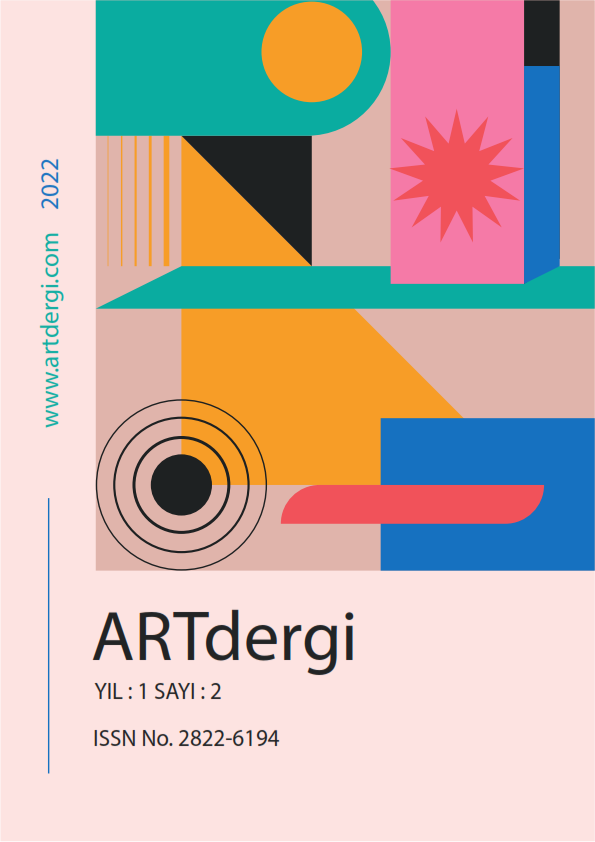POP SANAT İMGELERİNİN MAYOLİKA SERAMİK YÜZEYLERDE UYGULAMASI
Seramik Sanatı
DOI:
https://doi.org/10.5281/zenodo.7863803Keywords:
Seramik, Mayolika, Pop SanatAbstract
Majolica; Decor application, superior craftsmanship and precision have an important place in European ceramic art and Turkish ceramic art. With the Renaissance, the painting program replaced the ornament masters working in the frame ceramic workshops with the concept of a painter. This decor technique is still used skillfully by ceramic artists today.
The Majolica decor application of the Pop Art movement has made the artist more free in the field of thinking, working and application, as the images of Pop Art are rarely used on ceramic surfaces, but since its original expression, which has become unique in the fields of cinema, television, cartoons, painting and sculpture, knows no boundaries. The aim of this study includes the applications of Pop Art images by applying the Majolica decor technique, which is one of the different decor techniques in ceramic art, in an interdisciplinary art approach. The research carried out includes Ceramic Art, Majolica ceramics, history of Majolica ceramics, unique Majolica ceramic applications. The collection of samples on Majolica ceramic surfaces is included by using the ceramic decor measurement with animal figures and writing shapes on three-dimensional ceramic forms with colorful, decorative designs of Pop Art. As a result, it is thought that the outcomes obtained within the scope of the research will contribute to the art of ceramics.
References
Makryat Joseph, A Hıstory Of Pottery And Porcelaın, 1868, 12
Antmen, Ahu (2000) “A’dan Z’ye Yirminci Yüzyıl Sanatı”, P Sanat ve Kültür Dergisi, 65
Britannica Encyclopaedia /Ceramics syf 729 bMagrıbi—İspanya’nın Dikkate Değer Mirası. Uyanış!—1989 Britannica/Ceramics syf, 2008, s-730-731).
Bernsted Keblow (2003, s-2-7). Early Islamic Pottery Materials and Techniques Anne-Marie Keblow Bernsted 2003
Hess Catherine, Italian Maiolica 1988 s-6 s-46 , s-50)
Rodolfo Falchi, 1994 İtalyan Mayolikası, Edicart, Legnano (MI) 1994. ISBN 88-7774-493-6
Cooper Emmanuel, 10000 years of pottery, Philadelphia, University of Pennsylvania, 2010, s- 102- 157-161s- 259-262
Cooper Emmanuel-A History of World Pottery– February 1989,s-111).
Germaner, Semra 18. Yüzyıl Avrupa Resmi - Anlamı Biçimlendiren Etmenler, 1996, s 9-10).
Lynton, Lynton, N. (1982). Modern Sanatın Öyküsü. İstanbul: Remzi[50] Mangiaracina Filippo La Claudio Lynton, 1982, s-302 .
Germaner, Semra (1997): 1960 Sonrası Sanat - Akımlar, Eğilimler, s-11-12).
Shelley. " Geleceğe Dönüş: George Kubler, Lawrence Alloway ve Şimdiki Karmaşık ." Sanat Dergisi 2009 , s- 78-87
Oktay, Ahmet (2002).Türkiye’de Popüler Kültür, İstanbul: Everest Yayınları. 2002, s- 27
Ayata Tülin, Sy. Ceramıc Glazes.1976 İstanbul ,1976, s-20
Arcasoy, A. (1988). Seramik Teknolojisi. İstanbul: Marmara Üniversitesi Güzel Sanatlar Fakültesi, Seramik Anasanat Dalı Yayınları. s-240
Downloads
Published
How to Cite
Issue
Section
License
Copyright (c) 2023 International Journal of Art, Fashion, Music and Design

This work is licensed under a Creative Commons Attribution-NonCommercial 4.0 International License.


